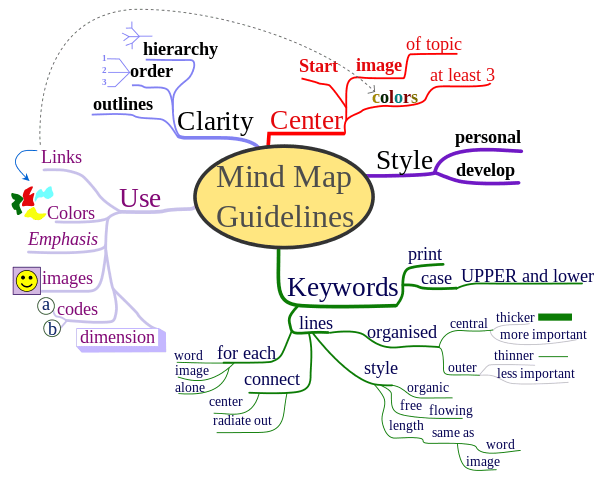A mind map is one of the most creative tools out there to ideate and capture notes. Invented and popularized by Tony Buzan, it is widely used by people all around the world to not just learn better, but also to boost retention ability. Whether you're new to mind maps or just want some tips, here's all you need to know about this widely used technique.
Structure of a mind map:
A mind map is basically a diagram that consists of a central idea with several branches and nodes depicting sub-topics or points related to the central idea. You can think of it as a tree that branches out, just one which is more radial in shape. It can either be hand-drawn or created using a mind mapping software.

How to create a mind map? Let’s take a look at the step-by-step approach:
- Start from the centre of a blank page preferably in the landscape mode.
- Write down the central idea or use some picture or drawing to represent it. This central idea will be the focus of your entire mind map.
- Start drawing branches from your central idea that will lead to the sub-topics. You can create more levels depending on the depth of the central idea.
- Try to keep the branches free-flowing rather than restricting yourself to straight lines, but remember to maintain a balance in the distribution.
- Use 2-3 different colours to make the mind map. Be careful to not use too many colours to avoid getting distracted.
Why is mind mapping a better way to take notes?
- Unlike linear note-taking, this method very well aligns with how our brain naturally functions, that is, by drawing connections between various objects.
- It allows us to fill our pages more organically by not constraining us to the linear top-down and left to right approach. This removes the unnecessary barrier some of us may experience while brainstorming or trying to understand something new.
- It helps us focus on the relationships and hierarchy between various points thus allowing us to remember them better.
- It gives the scope of better creativity by allowing us to freely add images and colours to our notes.

What are some of the best applications of mind-mapping?
- While taking notes in real-time e.g. during a live class. In this situation, mind maps will not stress you out while trying to match the pace of the lecture and allow you to focus more on the content being taught.
- While studying a complex subject or potentially abstract subjects like science and maths. Mind maps will allow us to visually understand the basics and connect them with derived concepts.
- While studying intensive subjects that require you to remember a lot of information and inter-connections e.g. history or geography.
- While studying unfamiliar topics and you don’t know where to start. Mind mapping will allow you to understand things one at a time without having to know the big picture at the beginning itself.

All in all, mind maps have proven to be a great tool to understand and remember better for many people worldwide.
Are you excited to try them in your day-to-day studies? Do share your experience with us in the comments section.

